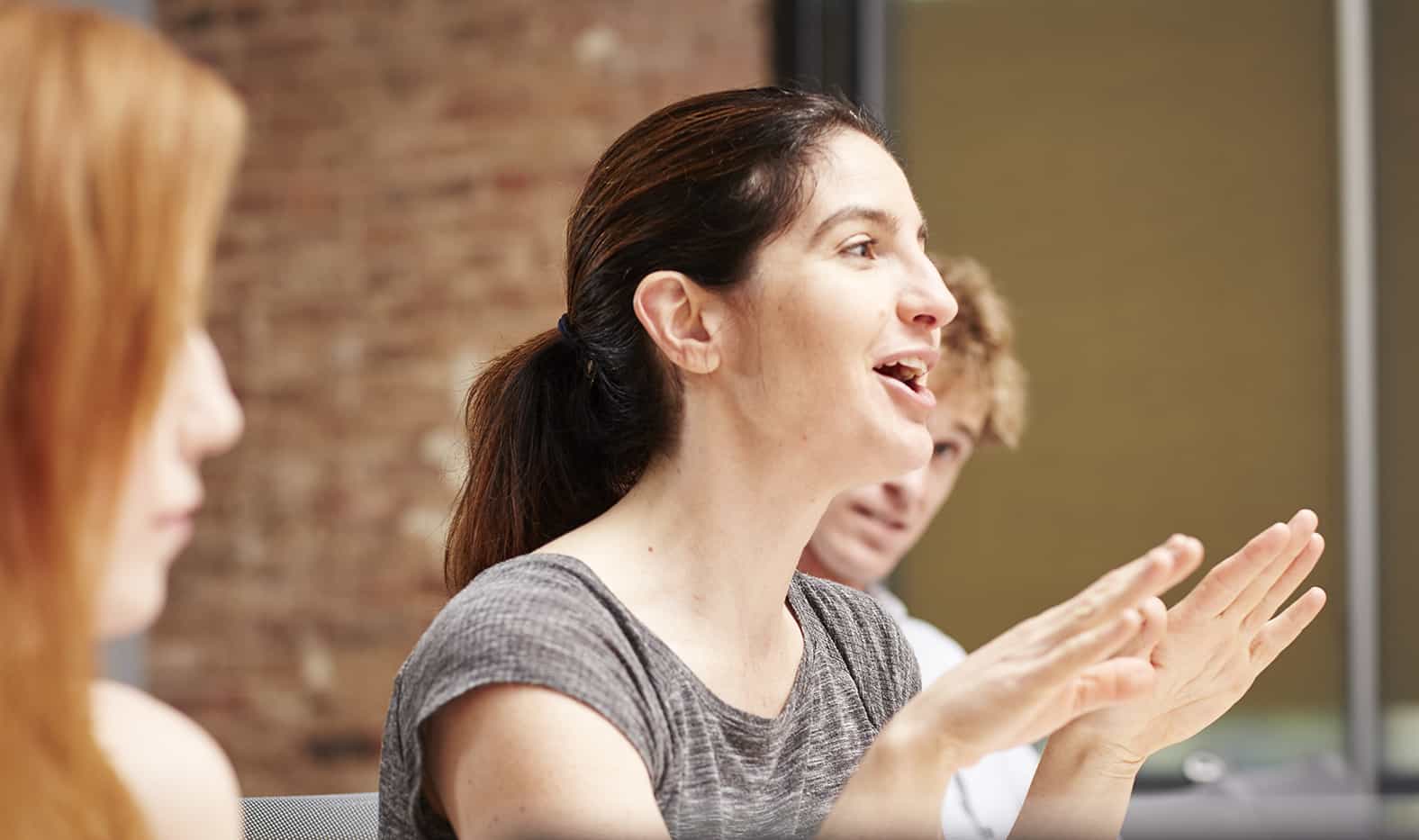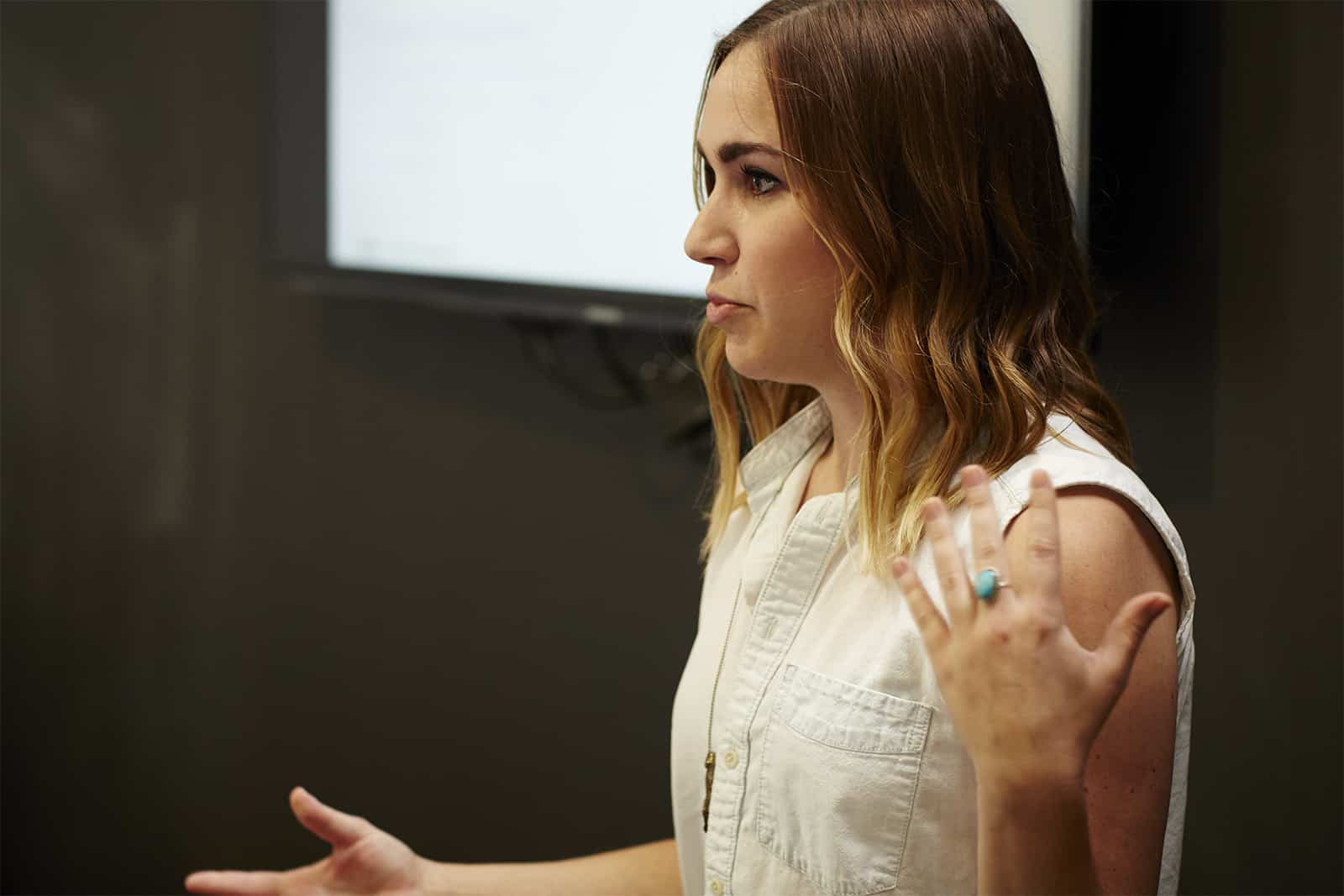How Thinking Like An Actor Can Empower Breakthrough Innovation
Driving sustained and vigorous growth is achieved through the constant replenishing of a company’s pipeline of breakthrough innovation and that means constantly “changing the rules of the game” with new ideas.
You have carefully navigated your team through the early strategic conversations needed to get the innovation program underway; the research is done, the tools created and frameworks to drive the transformation of your organization forward in place. You have reached that foreboding point in the process where you have to harness that intangible of all elements – CREATIVITY! And for many organizations, this is where the struggle begins.
The thought of being creative and expressing themselves for many people is just simply frightening. Fear of failure and/or judgment can be altogether crippling. This fear is further compounded in the workplace due to the burden of responsibility and the pressure to deliver results. The resulting anxiety is often the very thing that kills the innovative spark before it even has a shot at becoming a flame. It is important to accept and embrace this simple truth: creativity is not a talent but a state of openness. The most exciting implication to this truth is that while not everyone is particularly talented, everyone possesses the ability to be open.
So how do you create a collaborative, flexible and open approach for innovation teams to co-create together during the ideation process and achieve those innovation breakthroughs your team needs to achieve?
My time in the theater has shown me that everything I learned there also applies to design, especially creating a culture of safety where everyone is free to explore, build and iterate on their own and their colleague’s ideas.
Setting the right conditions for breakthrough innovation to thrive is a lot like being a director in the world of theater. During rehearsals, in preparation for a production, and even on-stage during a performance, directors construct this sacred space where actors are safe to create. It’s a place with rules and structure, where you’re given the tools you need to react to a situation rather than worry about where you are or what you’re doing. It’s a space where collaboration and openness is law, and co-creation rules—another world, where all contributions are worthy and you are free to be someone you’re “not”. And because putting yourself out there on the edge of a stage is scary work, directors construct this haven, invite you in, and use games and improvisation to break down the walls of failure and uncertainty that hold us back from being our most creative selves.
It’s the same situation when you’re an organization looking into the abyss of innovation.
What happens when you put people in a room with ten to fifteen of their superiors and colleagues and direct them to explore, be open and creative on demand? They get nervous. Lock up. Decide that they’re just “not good” at the ideation process, much less big-deal things that could make a difference for their company. At THRIVE we think about it differently. We consider innovation and improvisation as siblings and use the principles of improv as tools to create the structure, situations, interactions and safe space to allow the barriers and blockages to creativity to fall.
Here are ten rules inspired by improv that we use to collaborate and co-create with our client partners and their teams to achieve breakthrough innovation. Use them in your work today:
1. Accept offers. Create a Culture of YES.
Improv is based on someone making an offer (They say, “Look! A dragon!”) and someone else accepting it (Another person says, “Oh, no! It’s huge! What should we do?”). For an interaction to be successful, on-stage or off, everyone involved has to be willing to accept the ideas and comments (i.e. offers) thrown their way. If someone says no, (“There’s no dragon. That’s silly.”) the momentum of creation stops. In improv as in innovation, this is exemplified by the construct of “Yes, and…”
Thinking this way, “yes” becomes the default answer to any question or offer. This creates ultimate openness and helps others to embrace possibility by just shutting “no” out of the conversation. “…and” builds on it, creating momentum. Creativity stops when you stop moving forward. A culture of yes keeps things going during the ideation process. A culture of “yes…and” ensures it never ends.
2. Make rules.
When it comes to realizing a breakthrough innovation or improvising in the stage, people assume that there are no rules—that you just pop open a box of creativity and just dump it all over a problem. But it’s just not true. Rules make creativity possible.
In improv, at the beginning of a situation you set the stage. “We’re in a grocery store…and we’re a couple fighting about money.” “We’re kids on the playground.” In design, you set the success criteria. “What’s the problem, and the specific set of complications and criteria attached to it?” This allows creators not to have to use brainpower and energy wondering “Where are we?” or “What do we need?” All they have to ask themselves now is “How would I respond?”
Open ends kill creativity. Setting rules and boundaries sets us free to be our most creative selves.
3. Listen. Listen. Listen.
In improv, being successful and genuine in your role isn’t about being rehearsed. It’s about listening and taking in everything around you, processing that information, and feeling safe to add to it. In innovating for business, that means if you’re trying to create within an environment where people are always judging or scrutinizing you, “no” comes too easily from the fear of saying “yes.” But, if you feel like you’re in a safe space where the reaction to your thoughts might more likely be “That’s interesting…and this might also be interesting,” the fear diminishes. Not only has your offer been accepted (see Rule 1), but the other person has built on it.
That thing might not be the best idea ever or the solution that will be the most important in the end, but it feels great, and is ultimately productive, not limiting.
4. Know we’re all in this together & co-create.
When I’m running an innovation workshop teaching process for future growth, what I strive for is “How can we create culture? How can we shift the mindset?” In truth, “How can we all work together in a new way to meet our goals?” Similarly, in theater, we say, “there are no small roles.” The point is: every contribution is valuable in the ideation process, and in the end, we’re all in this together. It’s not about being the funniest, the most brilliant or the most worthy, it’s about feeling free to contribute in whatever way adds to the group.
5. Don’t give out participation trophies. Dole out empowerment.
When you hear all contribution is a good contribution, that shouldn’t remind you of every kid on the soccer team receiving a trophy. Creating a space where collaboration is critical and supported by a mindset of “yes…and” isn’t coddling, it’s incredibly empowering. Knowing that every contribution is a worthy one allows people to comfortably let things out that they didn’t even know they had inside them. And when everyone else is in the same boat—risking humiliation, stepping out of their comfort zones—it’s easier to take a deep breath and blurt out that idea that’s been haunting you for months.
You never know; it could be the “one.”
6. Step out of yourself.
Acting allows people to play a character and step outside of their normal being. Actors get to be “other” to the person they are day to day, and therefore aren’t weighed down by the expectations of who they “should be”. They can be anyone, the exact right person for the situation— and it’s glorious. It works in the business consulting and design worlds too. In our workshops, we use this principle, and the structure and safety of the non-judgmental space we’re creating, to give people the permission to be someone else.
This week, you’re not the finance guy or the HR girl. You’re a co-creator with great ideas—and we all want to hear them.
7. Tell a story.
Narrative has long been used as a vehicle for communicating to a group. Colonial English powers, for example, used Shakespeare’s interactive, immersive plays to teach their Indian subjects British culture, humor, and, perhaps most importantly, language. When you’re co-creating with a group of diverse individuals, there’s likely to be a learning curve about terms and context. People are out of their element, and when they’re in strange territory, they often stop contributing. We want “yes…and” so, we use the story to lead people in the right direction and promote listening to help everyone build a vibrant ecosystem of narrative that gets people excited.
The result: participants see the story take shape—someone adding a piece here and there—and they gain the confidence to co-create and build on to the idea themselves.
8. Don’t lead, direct.
On stage, the director is both coach and player at the same time. In innovation consulting, we are too—guiding participants through an ideation process, safeguarded by the sacred space we’ve created to make sure nothing stifles the creative energy. A company may have a charismatic or effective leader, but that person might not have the tools to guide a group in this way.
We work with the tools and hand over the toolbox at the same time.
9. Make mistakes. Fail better.
People love improv because of the potential for catastrophe. We watch with our faces half-covered, wondering “Is this going to be awesome, or terrible?” This duality is possible because improv actors operate with a level of commitment that borders reckless abandon. “Do it wrong, and do it strong,” is the mantra. It applies to the design and innovation process too.
In design, we talk about failing early and failing fast. That’s the whole idea—move quickly and explore all possible outcomes. Inherent in that, however, is a high possibility for failure…and growth. Seeing mistakes as a learning experience is pretty standard advice, but it’s worth remembering when creating.
You are statistically likely to have many more bad ideas than good ones, so you have no little but to accept failure not as a personal failing, but as an opportunity.
10. Play the game.
So, I haven’t told you to “just have fun” yet. Because that probably doesn’t do much for the typical workshop participant. But what does, is helping everyone feel what they’re doing is just a game, nothing serious, just fun!
Improv does this at its core by literally putting people in game-like situations that feel silly and outside normal life, but the idea goes deeper. If you’re playing a game, the stakes are lower. If there are rules (see Rule 2), it means it’s a game. And if it’s a game, then we’re all playing together. This is especially barrier-busting for newcomers or people with little context or vocabulary to express their creative ideas.
Like improv, innovation is a team sport, best done by a committed band of folks who harness a myriad of perspectives to purposefully create the new. When done well it can be delightful for the creators and the audience. So what are you waiting for? Get to it: Lights. Camera, Action – Create that breakthrough innovation!
AT THRIVE, we’re always looking for new ways to unlock breakthrough innovation when we are working with our client partners. One way we do this is by holding weeklong Capability Building workshops in which we teach and create at the same time. Leading teams through the repeatable processes they can use to dream up new ideas and products, while at the same time co-creating and collaborating with them to discover fresh opportunities right there, in the moment. If you would like to learn more about THRIVE’s Capability Building program, please contact [email protected] or call: 404.228.7342








